Maya Coleman never imagined her life would come to this. A former nurse and single mother to a 12-year-old boy named Ethan, she had always worked hard, played by the rules, and done everything she could to provide a stable life. But when the rural hospital where she worked shut down unexpectedly, everything changed.
Without her steady paycheck, the bills piled up. Ethan’s asthma required medication that wasn’t cheap, and despite juggling two part-time jobs—one at a coffee shop in the mornings, another at a convenience store in the evenings—she could barely cover food and utilities. Rent had become a source of constant anxiety. And when their landlord announced he was selling the building, giving them 30 days to vacate, panic set in.
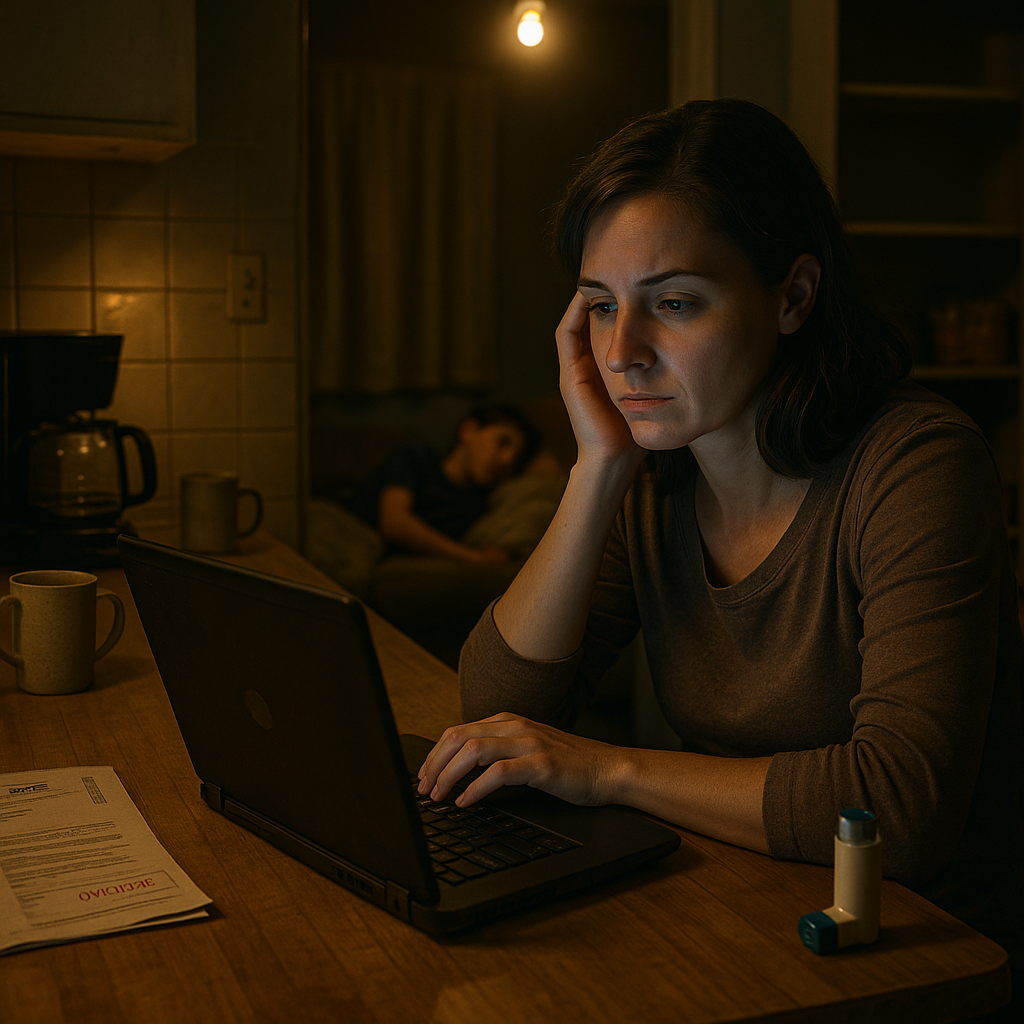
Maya had exactly $900 in her emergency fund. That was it. No savings, no family to rely on, and no one eager to rent to someone with spotty credit and a minimum-wage income. One night, scrolling through listings of rentals she couldn’t afford, she came across something different: a government auction site listing tax-delinquent properties. Most homes started in the tens of thousands, but one caught her eye.
It was an old farmhouse with three acres of land, and the starting bid was just $750. The photo showed a run-down two-story home with broken windows and an overgrown yard. The listing was short: “Abandoned. Significant repairs needed. No utilities. As-is.”
It looked haunted, honestly. But Maya couldn’t stop thinking about it.
The next morning, over coffee, she told her best friend Tasha. “Girl, you’re out of your mind,” Tasha said. “What if it’s falling apart? What about Ethan’s asthma?”
“I don’t know,” Maya replied. “But in 29 days, we’ll be on the street. No one’s renting to me. This could be something that’s ours.”
On the day of the auction, Maya dropped Ethan off at school, kissed his forehead, and whispered, “Wish me luck.” He looked confused, but she smiled and said, “I’ll tell you later.”
At the county courthouse, Maya clutched her purse as developers and real estate professionals casually filled the room. She tried to disappear into the background, watching carefully as each property was auctioned off. When her property was finally announced—1428 Old Mill Road, the abandoned farmhouse—there was a pause. Then Maya raised her hand: $750.
A man in the corner, barely looking up from his phone, countered at $800. Maya bit her lip and offered $850. The man raised it to $900.
That was it. That was all she had.
Maya stood and said firmly, “$900. Same as him.”
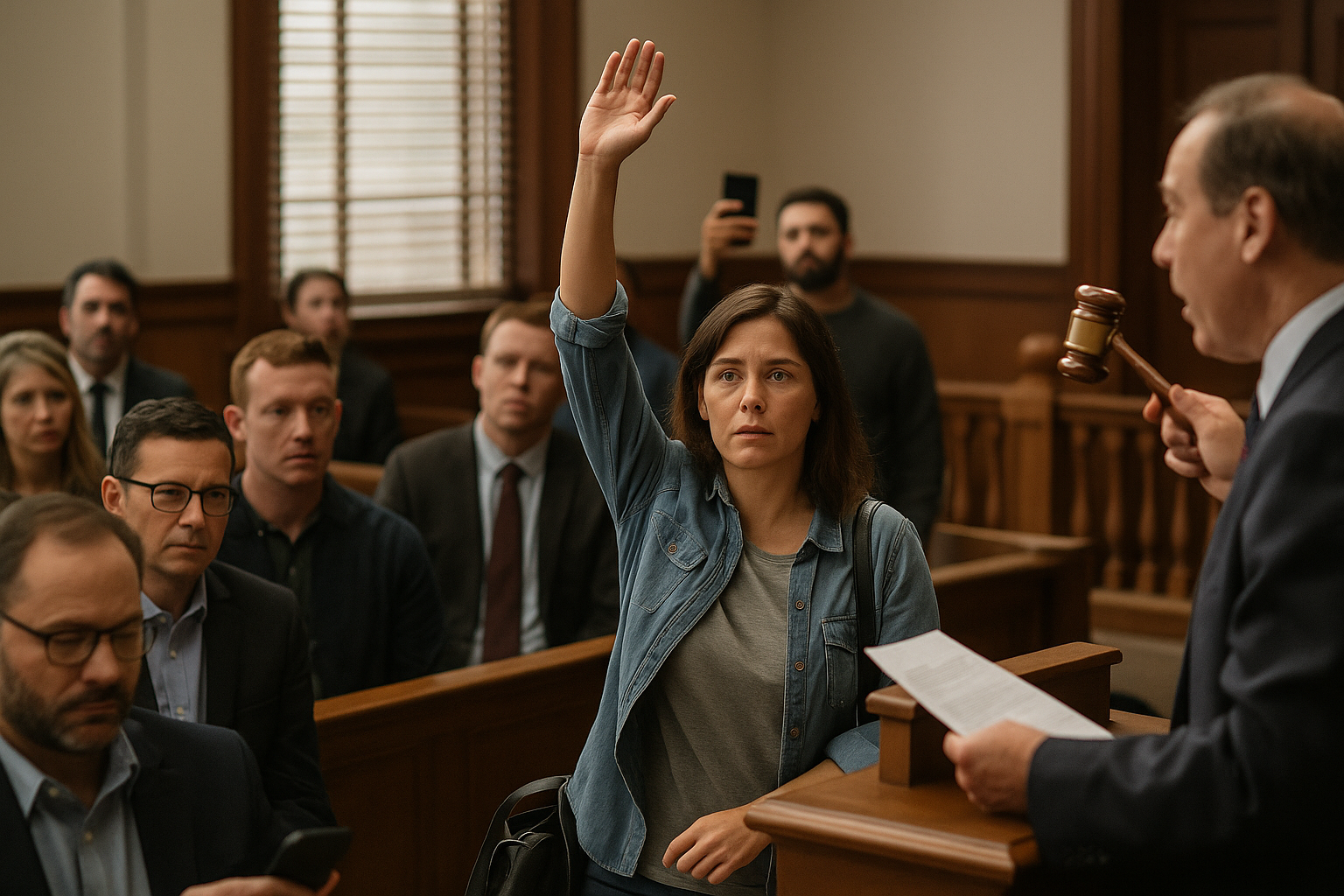
The auctioneer explained the current bid was already $900—if she wanted the property, she’d have to go higher.
She shook her head. “That’s everything I have.”
The room fell quiet. After a beat, the man who had bid against her glanced over, gave a half-shrug, and said, “She can have it.”
“Sold! For $900.”
Maya could hardly breathe. She had just bought a house. Every penny she had was now tied up in a broken-down building she hadn’t even seen up close.
At the clerk’s desk, she handed over her cash, signed papers, and was given a folder with documents—and a single key.
As she left the courthouse, one of the clerks asked, “That’s the Mercer place, isn’t it?”
“I think so,” Maya replied.
The woman raised her eyebrows. “That house has some stories…”
Maya didn’t ask. She wasn’t sure she wanted to know.
That afternoon, she picked Ethan up early from school.
“Are you okay?” he asked as he climbed into the car.
She smiled. “We own a house.”
He blinked. “You bought a house? With what?”
“With everything,” she said. “Do you want to see it?”
The drive out to the property took longer than expected, winding through back roads until a hidden, overgrown driveway appeared. As they pulled up, the house came into view—and even Maya had to admit, it looked worse than she hoped. Paint peeled away in long strips. The front porch sagged. The windows were cracked or boarded up.
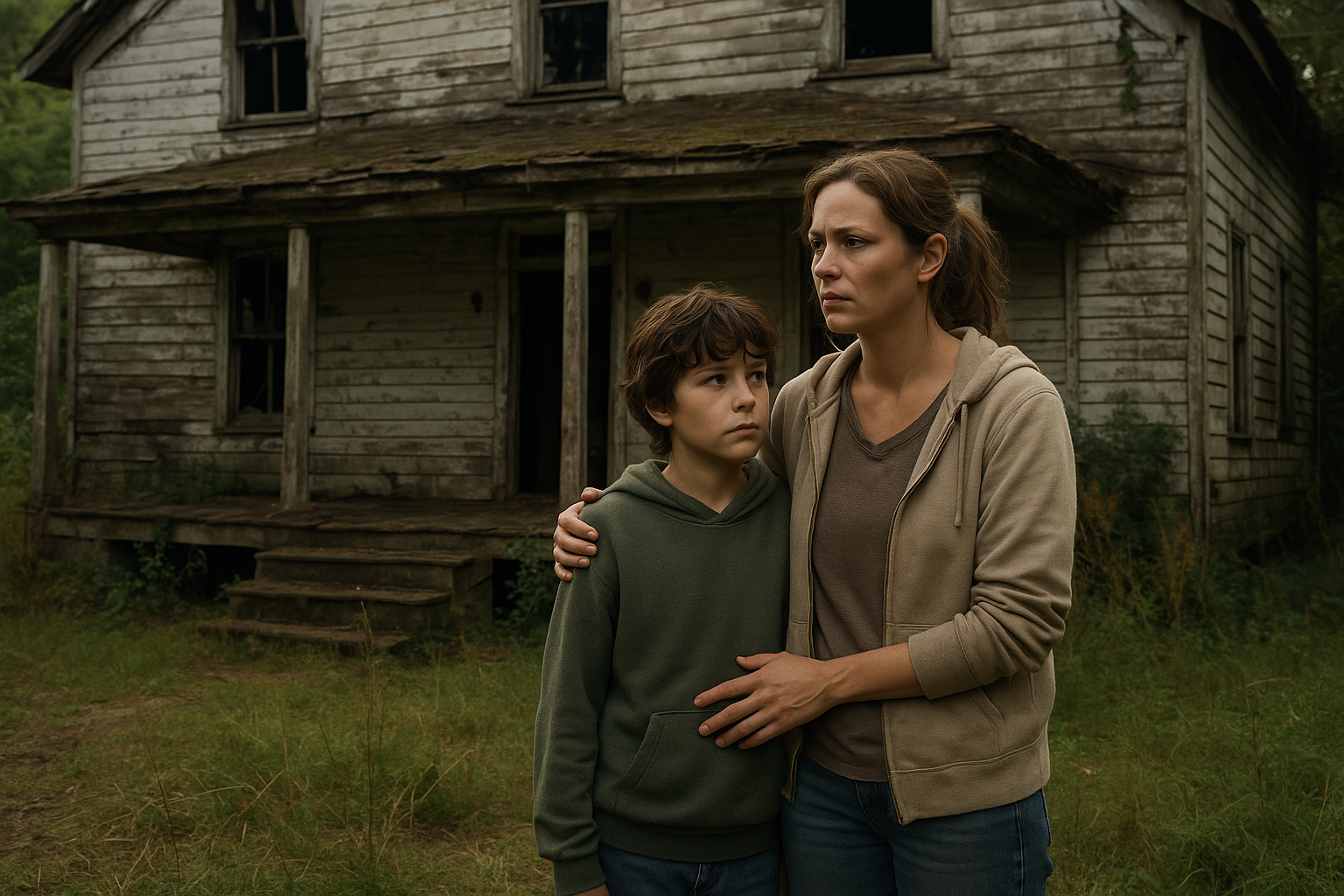
Ethan stared, wide-eyed. “We’re going to live here?”
“It needs work,” Maya said, “but it’s ours. No more landlords. No one can kick us out.”
They entered cautiously. The air smelled of dust, mildew, and time. Mold crept along parts of the ceiling. Debris and broken furniture littered the rooms. Some corners still had old furniture: a wooden rocking chair, a sagging couch, bookshelves with moldy paperbacks. But beneath the decay, there were signs this house once held warmth. Crown molding, hardwood floors, antique light fixtures. It had good bones.
“I want to see upstairs,” Ethan said.
“Let me check it first.”
The stairs groaned but held her weight. Upstairs were four bedrooms and another small bathroom. In one, faded wallpaper peeled away to reveal hand-drawn children’s art on the walls.
Ethan followed, but the dust triggered his asthma. Within minutes, he was coughing, and Maya guided him outside to use his inhaler.
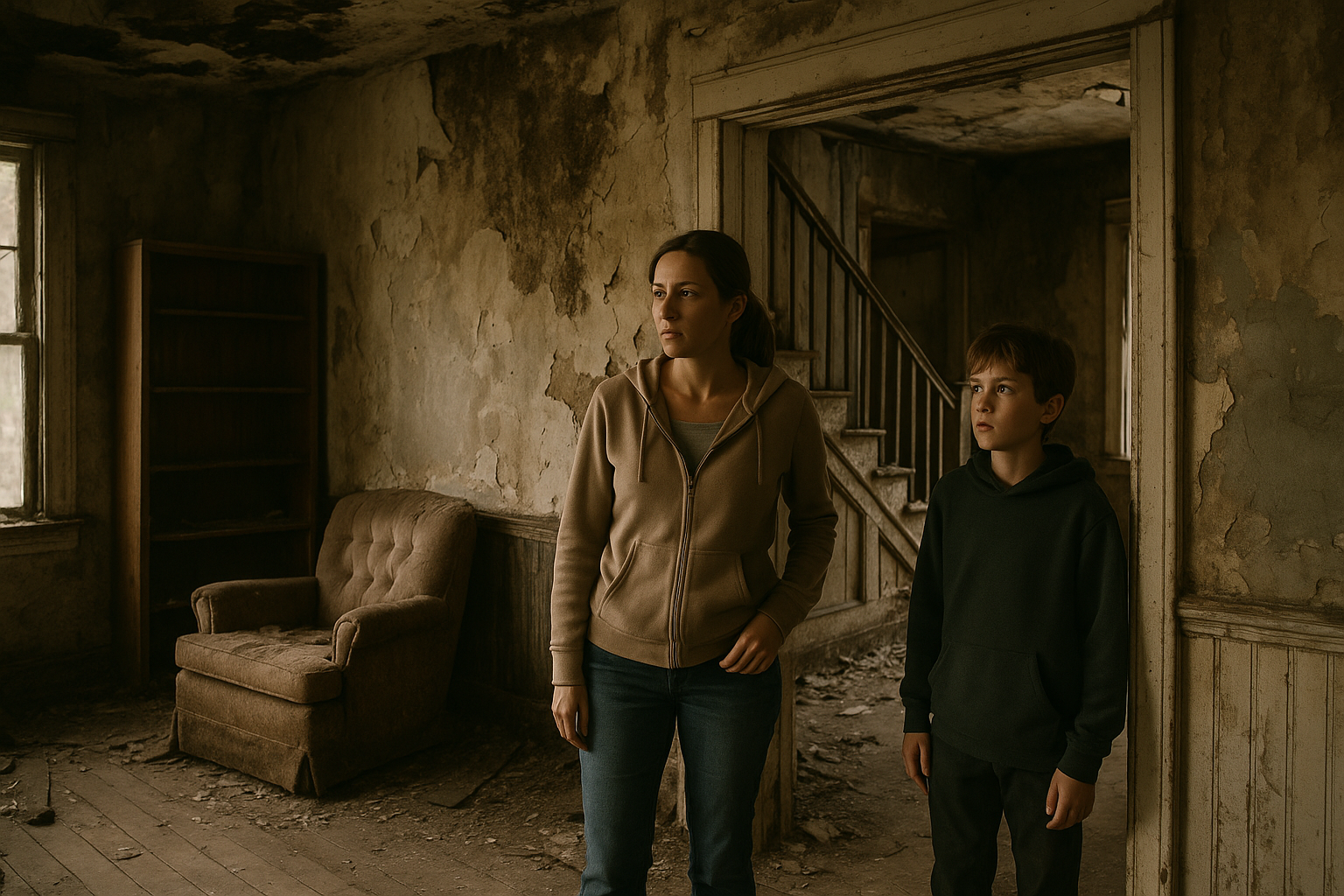
They couldn’t sleep inside that night. It wasn’t safe.
So they slept in the car.
The next morning, a pickup truck drove up. An elderly woman stepped out with a basket.
“Morning!” she called. “I’m Iris. I live just down the road. Figured you might need breakfast.”
Warm muffins, a thermos of coffee, and orange juice.
Iris smiled at Maya and said, “So you bought the Mercer place?”
Maya nodded. “What’s the story with it?”
“Used to belong to a woman named Josephine Mercer. She was an herbalist—helped folks around here when they couldn’t afford doctors. Brilliant woman. Disappeared back in ’89. Left everything behind. Just… vanished.”
“Do people think something happened to her?”
“Some say she left. Others say the place is haunted. I think she had secrets—and a good heart.”
Later that day, another neighbor dropped by—Sam Reynolds, a contractor. “You were at the auction,” Maya said.
“I was,” he nodded. “Did some work on this house for Josephine years ago. When I saw you bidding, I figured you needed it more than I did.”
“I don’t know how to fix any of this,” Maya admitted. “And I can’t afford to hire anyone.”
Sam smiled. “I’m not charging. It’s called being a neighbor.”

Over the next week, Sam helped inspect the house. He confirmed what she feared: the roof needed work, the wiring was ancient, the plumbing needed replacing. But the foundation was strong. The house could be saved.
In the meantime, Sam lent her a clean trailer with working plumbing. He and his daughter Lily started coming by regularly. Lily and Ethan became fast friends.
While exploring the property, they discovered the remains of gardens—apple trees, thyme, lavender, mint, and other plants Josephine likely cultivated.
One afternoon, while cleaning out a bedroom, Maya stepped on a loose floorboard. Curious, she pried it open—and found a small metal box.
Inside was a journal, old photographs, and a beautiful brass key.
The journal belonged to Josephine Mercer. It chronicled her life as an herbalist, with detailed sketches of medicinal plants and notes from her previous life as a pharmaceutical researcher. She had a PhD, had left a prestigious research lab, and came here to pursue natural remedies on her own terms.
One entry stood out: she had isolated a compound with promising results for a rare autoimmune disorder—Carther’s syndrome. She wrote about struggling with whether to publish or sell the discovery. She feared it would be commercialized and withheld from people who needed it most.
The last entries hinted at fear—someone pressuring her to give up her research. She had chosen not to.

Maya felt something stir inside her. As a nurse, she knew what it meant to have research like this. She showed the journal to Dr. Elaine Chen, her old supervisor. Dr. Chen’s hands trembled as she read through it.
“This is extraordinary,” she said. “This research could change lives.”
Josephine had been ahead of her time. But her work had never been published. It was sitting in a forgotten farmhouse, gathering dust.
Together, Maya and Dr. Chen began documenting everything. They consulted legal experts, historians, and eventually filed a patent in Josephine’s name—with Maya as the research executor. Dr. Chen helped connect them with ethical pharmaceutical companies who agreed to honor Josephine’s wishes: affordable access, no profiteering.
Word began to spread.
Journalists picked up the story. “Single Mom Discovers Forgotten Medical Breakthrough in Abandoned House.” Researchers reached out. And soon, the treatment Josephine had once feared would be buried forever was heading to clinical trials.
The farmhouse was restored with help from volunteers. The gardens were revived using Josephine’s original notes. The home became part research center, part community healing space. Ethan’s health began improving, too—he loved spending time outdoors in the garden, learning about plants and their uses.
Maya founded the Josephine Mercer Foundation, offering scholarships for women in science, funding rural health projects, and preserving natural medicine.
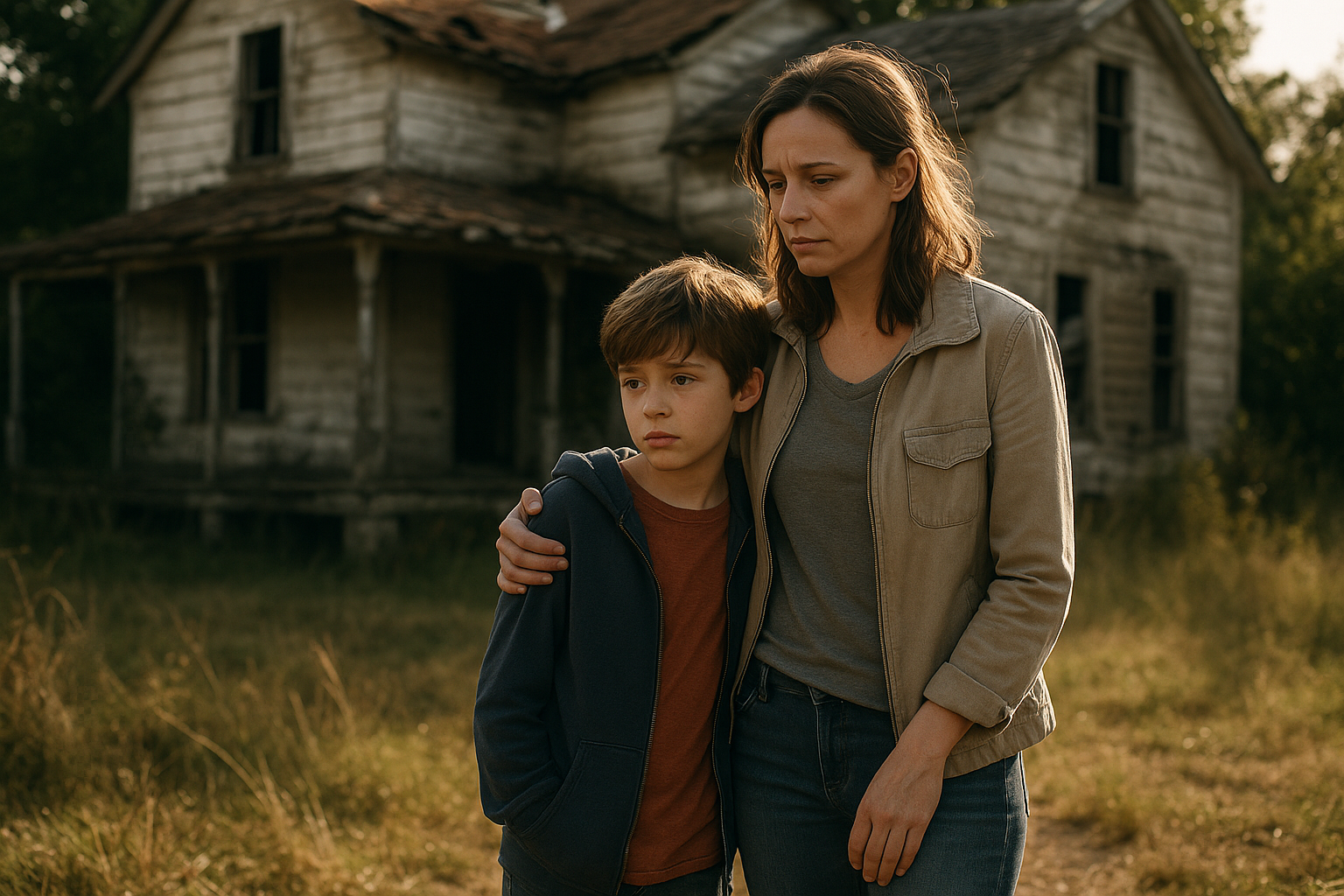
One year after she took that terrifying leap of faith, Maya stood on the porch of what was once a crumbling relic and was now a thriving sanctuary. Neighbors, researchers, and even tourists came to learn about the woman whose brilliance almost disappeared—and the mother who saved her story.
Looking out across the apple orchard, Maya whispered, “Thank you, Josephine… for choosing me.”
And in the breeze that passed through the garden, carrying the scent of lavender and mint, she felt an answer.
This work is inspired by real events and people, but it has been fictionalized for creative purposes. Names, characters, and details have been changed to protect privacy and enhance the narrative. Any resemblance to actual persons, living or dead, or actual events is purely coincidental and not intended by the author.


